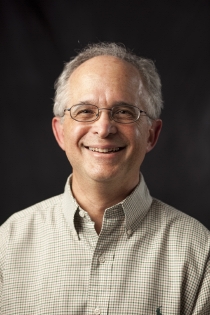END NOTE
Why teamwork is the new research paradigm of life sciences

Andrew Bass See larger image
Cornell has long been culturally adapted to research that transcends traditional disciplinary boundaries. The story in this issue about the rice genomics project led by Cornell researchers is emblematic of how our scientists are reaching across disciplines to improve global welfare.
Cornell also has a far-reaching reputation of scientific research in the public interest, and the rice genomics project demonstrates how life science research has grown on this campus in recent years. In particular, starting in 1997, a grassroots movement, the Cornell Genomics Initiative (CGI), began creating a new dialogue between research scientists on the Ithaca campus with those at the Geneva Agricultural Experiment Station and two Cornell-based independent organizations, the Boyce Thompson Institute for Plant Research and the Agriculture Research Service's Robert W. Holley Center for Agriculture and Health.
CGI faculty spearheaded a campuswide effort to recruit a new generation of life scientists who were versatile in using such recently discovered genomic technologies as DNA sequencing to answer fundamental questions about organisms and their responses to environmental challenges. In 2002 CGI morphed into the New Life Sciences Initiative (NLSI), whose central vision was to lead the life sciences at Cornell into the future by fostering interactions with engineering, computer sciences and the physical sciences.
So where are we now?
Interdisciplinary bridges nurtured by the NLSI, like those created in the rice genomics project by Susan McCouch (plant breeding and genetics), in collaboration with Cornell faculty Jason Mezey (biological statistics and computational biology) and Leon Kochian (plant biology, USDA Agricultural Research Service), and bioengineering graduate student Randy Clark, are pointing the way to Cornell's increasing involvement in global health and nutrition issues.
McCouch and her colleagues are demonstrating to Cornell's newly extended community of life scientists how to deal head-on with a wide swath of rapidly changing challenges to populations' health and welfare as well as to their surrounding environment. Thus we find teams of scientists on and between each of Cornell's campuses in Ithaca, Geneva and at Weill Cornell Medical College in Manhattan developing, for example, innovative technologies for noninvasive imaging of biological events associated with tissue injury and repair, computationally intensive analytical methods to interpret an ever-expanding genomic library that will help us understand the process of evolution, new approaches in geriatric psychiatry and medicine to deal with the stressors of an aging human population, and novel nutritional supplements and biofuels that will (quite literally) propel us into the future.
Cornell's collaborative research spirit also infuses its undergraduate teaching. As more undergraduates become engaged in research, they experience – as do our graduate students – a remarkable learning environment. Not only are they learning independent thinking, problem solving and integrative inquiry at the interfaces of organismal and molecular biology, computational sciences, physical sciences, engineering and social sciences; they are also discovering that interdisciplinary teamwork with biologists, engineers, physicists, computer scientists, mathematicians and chemists is the new research paradigm of the life sciences.
As we move toward the university's sesquicentennial in 2015 we are strengthening and renewing our tradition for research and teaching that transcends the more traditional disciplinary boundaries, and we plan to recruit more faculty, staff and students that can benefit from this environment, contribute to it and set it in new directions.
In this way, Cornell can fully realize both its traditional and unique disciplinary strengths by renewing our commitment to far-reaching institutional teamwork.
Andrew Bass is a professor of neurobiology and behavior and Cornell's associate vice provost for research.